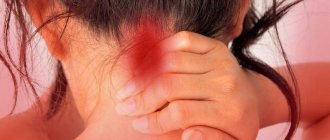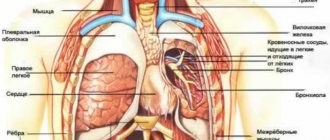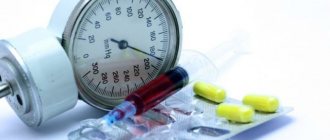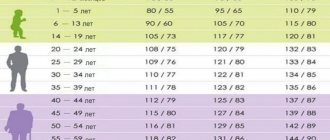An occasional headache is familiar to all people, since it can appear as a consequence of ordinary fatigue or the body’s reaction to changes in meteorological conditions. Usually this condition does not require medical intervention and stops on its own, you just need to rest a little or wait for the weather to change. However, constant pain in the temples, forehead or eyes this is a clear reason to think about your own health, since regular headaches (chronic cephalgia) can be one of the symptoms of a serious illness.
Why does pain occur in the temples?
Physiological reasons
A dull pressing pain in the temples is observed when staying in a stuffy room. If a person cannot go out into the fresh air, the painful sensations increase, sometimes becoming sharp and pulsating. In some people, the symptom is triggered by strong feelings, most often anxiety and fear. May occur against the background of stressful situations. Another possible cause is starvation when trying to quickly lose weight, following strict diets, or eating disorders.
Migraine
The pain is pressing, throbbing, one-sided. The zone of maximum pain is located in the projection of the temple, eye or forehead. Sometimes an aura or prodrome is observed in the form of weakness, impaired ability to concentrate. It is typical for the affected side to change from one attack to another. Migraine symptoms are aggravated by bright light, loud sounds, and any physical activity. Patients try to “lie down” in solitude, silence and darkness.
Cluster headache
Pain occurs during periods of exacerbation, lasting from 2 weeks to 2 months. Appear suddenly, reaching a maximum after 1-3 minutes. The attack lasts from 15 minutes to 1 hour, less often up to 3 hours. Episodes occur at one time, often at night, and can be repeated from one per day to two to four (sometimes eight) during the day. Painful sensations are one-sided, more often on the left.
Localized in the eye, radiating to the temple, ear, cheek and teeth, extremely sharp, unbearable, stabbing or burning. Accompanied by nasal congestion, facial and conjunctival hyperemia. Described by patients as an “eye rupture” or “stabbed in the eye.” Photophobia, nausea and vomiting are observed in 30% of cases. The patient is agitated and rushes about, since physical activity somewhat reduces the intensity of the pain.
Tension headache
The symptom is mild or moderate. The headache is bilateral, non-pulsating, squeezing or squeezing the head with a “hoop”, especially noticeable in the temple area. There is no dependence on physical activity, no nausea or vomiting. The duration of the attack ranges from half an hour to 1 week. Pain increases with strong emotions and decreases with emotional relaxation.
Pain in temples
Primary and symptomatic hypertension
Along with essential hypertension, there are more than 50 diseases that cause high blood pressure. An increase in blood pressure, regardless of etiology, is accompanied by pain in the temples and back of the head. Patients complain of tinnitus, spots before the eyes, shortness of breath, chest pain, restlessness, or a feeling of fear. An external examination may reveal hyperemia of the skin. The symptom is observed in the following pathologies:
- Kidney diseases
: pyelonephritis, glomerulonephritis, hypoplasia, polycystic disease, amyloidosis, urolithiasis, tumors, diabetic nephropathy, renal tuberculosis. - Endocrine disorders
: pheochromocytoma, Cushing's disease and syndrome, primary aldosteronism. - Pathologies of large vessels
: coarctation of the aorta.
Hydrocephalus
Due to an increase in the amount of fluid in the cerebrospinal fluid system with hydrocephalus, intracranial pressure increases. Along with pain in the temples and throughout the head, intracranial hypertension is manifested by disturbances of consciousness, nausea, vomiting, blurred vision, and sometimes convulsive seizures. The symptom is detected in conditions such as:
- developmental defects: Chiari anomaly, Dandy-Walker syndrome, stenosis of the Sylvian aqueduct;
- intrauterine infections and birth injuries;
- traumatic brain injuries;
- inflammatory processes: encephalitis, meningitis, arachnoiditis;
- vascular pathologies: hemorrhagic stroke, intraventricular hemorrhage;
- neoplasms: colloid cysts, intracerebral ganglioneuromas, germinomas, astrocytomas, etc.
Traumatic brain injury
Headache is a constant symptom of TBI and is observed with injuries of any severity. Accompanied by dizziness, nausea, vomiting, amnesia. Impaired consciousness, paresis, decreased sensitivity, and other manifestations are possible. At first, the pain is usually diffuse. During the recovery period, pain in the temporal areas sometimes prevails.
Temporal arteritis
Caused by autoimmune damage to the temporal artery. Often occurs after viral infections. Horton's disease develops in middle-aged and elderly patients. Accompanied first by aching, then by piercing, burning pain in one or both temples, increasing over 2-3 weeks. The symptom worsens with chewing and talking. Complemented by loss of appetite, sweating, hyperthermia, weight loss, sleep disturbances, myalgia, arthralgia.
Intoxication syndrome
Pain in the temples is one of the possible variants of headache with intoxication syndrome against the background of bacterial and viral infections, local purulent processes. It can be dull, squeezing, aching, pulsating. Increased body temperature, weakness, weakness, dizziness, pain in joints and muscles are observed. Other signs are determined by the cause of intoxication.
Trigeminal neuralgia
Prosopalgia is paroxysmal in nature and is a series of intense, shooting, burning pain impulses that resemble an electric shock and spread from the lateral surface to the center of the face. The duration of the episode is up to two minutes, the attacks are repeated several times. When the nerve is completely involved, the entire half of the face suffers; when the second branch is affected, the pain is localized in the temple area, the outer corner of the eye, the adjacent part of the cheek, and the upper lip.
Damage to the temporomandibular joint
TMJ dysfunction is a problem that can be caused by the following factors:
- Dentofacial pathologies
: trauma, malocclusion, dental defects, poor-quality prosthetics, congenital anomalies. - Muscle overstrain
: bruxism, tonic spasm, overload of masticatory muscles, high speech load. - Psychological factors
: prolonged neuropsychic stress.
Typical symptoms include pain in the temples, eyes, ears, prosopalgia, headaches, difficulty and clicking when opening the mouth. Possible dizziness, sleep disorders, dysphagia, glossalgia, sleep apnea syndrome.
Other reasons
Sometimes hormonal changes become a provoking factor. Girls may experience pain in their temples during the onset of menstruation. Some mature women note the onset of symptoms during menopause. Another possible reason is intoxication. Pain in the temple area is observed in a state of alcoholic intoxication, with an overdose of certain medications, or carbon monoxide poisoning.
Intraocular hypertension and glaucoma
Intraocular hypertension is a pathological increase in intraocular pressure. The pressure that the intraocular fluid and vitreous body exert on the membranes of the eyeball. It can only be measured at an appointment with an ophthalmologist.
At CELT you can get advice from an ophthalmologist.
- Initial consultation – 3,900
- Repeated consultation – 2,000
Make an appointment
Temporary increases in blood pressure can be caused by drinking alcohol, smoking, or eye strain. If the sensation of pain does not go away for a long time, then this is a symptom of glaucoma - one of the most common and dangerous diseases. It manifests itself as a decrease in visual acuity and over time can lead to complete blindness.
The insidiousness of glaucoma is that it develops gradually: in the first stages, a slight pressing pain may be the only symptom. The disease develops at any age, but most often in older people.
Diagnostics
The diagnostic program is compiled by a neurologist. If necessary, a maxillofacial surgeon, infectious disease specialist, and other specialists are involved in the examination. To clarify the pathology, the following procedures may be prescribed:
- Questioning and external inspection
. During the conversation, the doctor finds out the time and circumstances of the onset of the symptom. Asks about the nature and duration of pain, other manifestations, as well as the presence of similar symptoms in blood relatives. Upon examination, increased blood pressure, skin hyperemia, renal edema, signs of endocrine pathology and infectious diseases may be detected. - Neurological examination
. With hydrocephalus, vestibular and cerebellar ataxia and nystagmus are possible. In patients with TBI, general cerebral and focal symptoms are determined. With trigeminal neuralgia, pain in trigger points is detected, with fascicular cephalgia - rhinorrhea, hyperhidrosis, drooping eyelid, conjunctival injection (during an attack). - Neuroimaging
. X-ray, CT, MRI, MRA and ultrasound techniques (duplex, Dopplerography) are informative for hydrocephalus, traumatic injuries, and determining the genesis of compression of the trigeminal nerve. They help to establish the cause of hydrocephalus and assess the severity of vascular damage in patients with arterial hypertension. - Lumbar puncture.
Indicated to clarify the cause of increased intracranial pressure, it is performed as part of an examination for traumatic brain injuries and neuroinfections. The resulting cerebrospinal fluid is sent for microscopic, microbiological, and PCR studies.
In addition, ultrasound of the kidneys and endocrine organs, radiography and computed tomography of the TMJ, laboratory tests to assess the condition of the body, determine the causative agents of common infections and purulent processes can be performed. For migraine, cluster cephalalgia, tension pain, additional studies are not very informative; differential diagnosis, carried out on the basis of clinical signs of the disease, comes to the fore.
Neurologist consultation
Causes of sinusitis
The disease occurs more often in the cold season in people with weakened immune systems, but this is not the only reason. Inflammation of the maxillary sinus can develop due to:
- complications of a runny nose;
- curvature of the nasal septum;
- damage to the nasopharynx;
- adenoiditis;
- infections and bacteria;
- allergies;
- too dry indoor air;
- work in hazardous industries;
- poor condition of the upper teeth;
- trauma to the mucous membrane of the maxillary sinus.
Treatment
Conservative therapy
The plan of conservative measures is determined by the etiology of the pain syndrome:
- Migraine
. To relieve attacks, simple and combined analgesics are used, and sometimes therapeutic blockades are performed. To prevent new paroxysms, antidepressants, anticonvulsants, and psychotropic drugs are used. - Tension headaches
. Medicinal methods include NSAIDs, antidepressants, muscle relaxants, occipital nerve blocks, non-medicinal methods - massage, manual therapy, acupuncture, biofeedback, relaxation techniques. - Bundle cephalalgia
. Paroxysms are eliminated with the help of triptans; in case of intolerance, oxygen inhalations are prescribed, and local anesthetics are injected into the nasal cavity. Calcium channel blockers are effective for preventive purposes. - Hydrocephalus
. In the case of an acquired variant of the pathology, the causative disease is treated and diuretics are prescribed. - Arterial hypertension
. Etiopathogenetic therapy is carried out. It is recommended to control blood pressure and take antihypertensive drugs. - Temporal arteritis
. The basis of drug therapy is glucocorticoid hormones. If there is no result, they switch to cytostatics. To eliminate symptoms, vasodilators, anticoagulants, and anti-inflammatory drugs are prescribed. - Trigeminal neuralgia
. Anticonvulsants are considered the first line treatment. Additionally, antispasmodics, microcirculation correctors, antihistamines, and therapeutic blockades are used. - TMJ dysfunction
. It may be necessary to eliminate dental pathologies. Soft food is recommended. Pain is reduced with the help of NSAIDs, antidepressants, botulinum therapy, glucocorticosteroid blockades, massage, and physiotherapy.
What is sinusitis?
Sinusitis is an inflammation of the maxillary sinuses. It usually develops as a complication of a runny nose. The most characteristic signs:
- temperature rises to 37 - 37.5 C;
- nose is stuffed;
- yellow-green nasal discharge appears;
- the bridge of the nose, cheeks near the wings of the nose and temples hurt;
- headache worsens in the evening;
- the sense of smell disappears;
- the voice becomes nasal;
- feeling of general weakness.
When the maxillary sinuses are inflamed, a person quickly gets tired, it is difficult for him to concentrate, and his memory weakens. It is very difficult to work with sinusitis, so it is better to take sick leave.
Sinusitis can be acute or chronic.
Cephalgia in children
Pulsating discomfort in a child that is not accompanied by fever, cough and runny nose should alert parents. In such cases, it is important to consult a doctor. Such manifestations may indicate problems with the child’s health.
The phenomenon can be triggered by:
- disease of the vascular system;
- neuralgia;
- migraine;
- injury;
- emotional condition;
- poor nutrition;
- the presence of provoking external factors.










